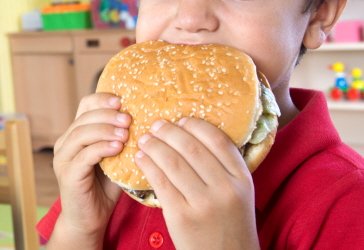The findings suggest more intense interventions may be required and have relevance for researchers, policy makers, public health practitioners and doctors.
Low levels of physical activity and of fruit and vegetable consumption in childhood are associated with adverse health outcomes. School-based interventions have the potential to reach the vast majority of children, and evidence reviews have suggested some beneficial effect. However, the poor quality of many of the previous trials means their effectiveness may be exaggerated.
A team led by Professor Debbie Lawlor at the University of Bristol decided to investigate the effectiveness of a school-based intervention to increase physical activity, reduce sedentary behaviour, and increase fruit and vegetable consumption in children.
The Active for Life Year 5 (AFLY5) intervention took place at 60 primary schools in the south west of England and involved over 2,000 children aged 8 to 10 years over the study period. The trial was funded by the National Institute for Health Research (NIHR) Public Health Research Programme.
The study was designed to overcome many of the limitations of previous trials in this area. For example, by including a large number of children and using accelerometers to measure activity levels.
The intervention consisted of teacher training, lesson plans and interactive homework activities, and written material for school newsletters and parents. Schools were randomly allocated to either the intervention or control arm (control schools received standard teaching).
The researchers found no evidence that the intervention increased time spent in moderate or vigorous physical activity or reduced time spent in sedentary behaviour when both were assessed using accelerometers. There was also no effect on child reported fruit and vegetable consumption.
Further analysis found that the intervention was effective in reducing child reported time spent in front of a screen at weekends and self reported consumption of snacks and high energy drinks.
Despite being one of the largest trials in this area to date, and taking account of limitations of previous trials, the authors conclude that the AFLY5 intervention ‘is not effective at increasing levels of physical activity, decreasing sedentary behaviour, and increasing fruit and vegetable consumption in primary school children’.
They suggest that a change in these activities ‘may require more intensive behavioural interventions with children or upstream interventions at the family and societal level, as well as at the school environmental level’.
Professor Lawlor, from Bristol University's School of Social and Community Medicine, added: “It is possible that the increased child-efficacy and knowledge that the intervention aims to affect takes some time to embed and affect behaviour. Further follow-up of these children will test that.”
Researchers from the Centre for Exercise, Nutrition and Health, within the School for Policy Studies, and colleagues in the School for Clinical Sciences were also involved in the research.
